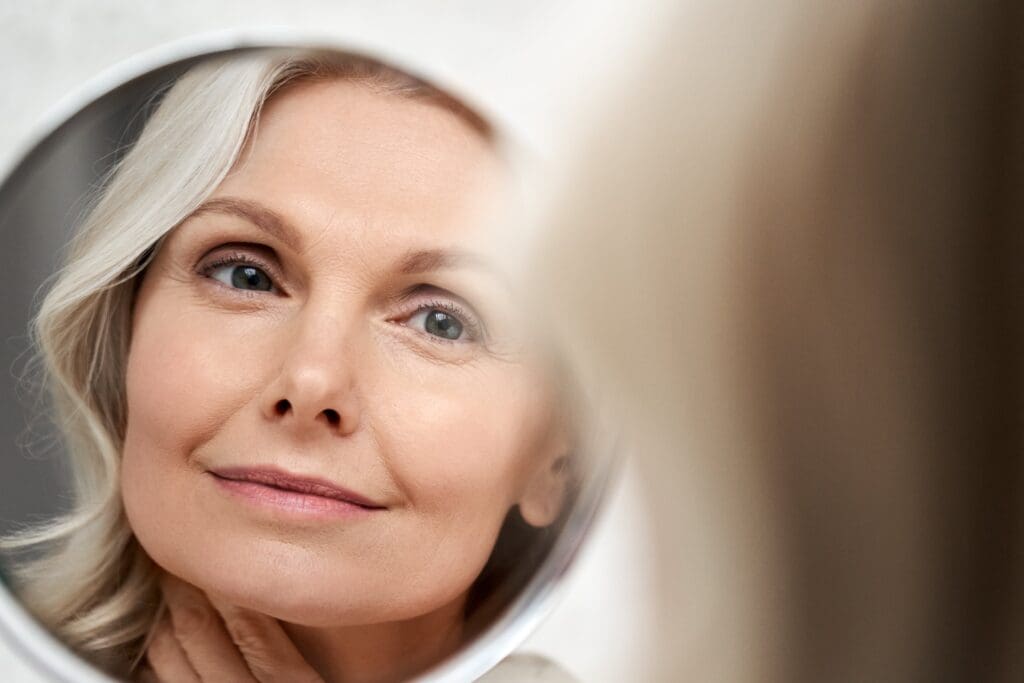Non-surgical Treatment for Stress Incontinence
Stress incontinence can be caused by a wide variety of factors and appears in both men and women, but is particularly common among postnatal, menopausal and postmenopausal women.
What is Stress Incontinence?
Stress incontinence occurs when the muscles that usually hold the bladder tightly, also known as the pelvic floor muscles, and the muscles around the bladder neck become weakened.
This is often caused by muscle strain during childbirth or the loss of muscle tone that occurs during the menopause. In these instances, the muscles cannot hold the bladder closed effectively, especially when strain is put on them, such as when we run, jump, cough, sneeze, laugh or lift heavy objects. When this happens, sufferers of stress incontinence often feel the telltale leaks or dribbles that stress incontinence is characterised by.
Stress incontinence can also cause nocturia, or the feeling of having to get up to go to the toilet at night more often. Many women who have Femme treatment with Katie Alex report a big improvement in their nocturia symptoms as well as traditional stress incontinence symptoms.
Ultra Femme 360 treatment can help to improve symptoms of stress incontinence by triggering muscle and tissue regeneration in the vaginal canal and around the neck of the bladder to help increase the strength of the muscles and improve control over continence.

Incontinence after Childbirth
Throughout pregnancy and childbirth, women’s bodies go through a whole range of changes, including physical change, hormonal changes and psychological changes. Weight gain, changes to the shape of your body, changes to the thyroid, changes to your skin and hair (such as breakouts of hormonal acne) are just some of the changes you will notice. The effects of pregnancy or childbirth vary from woman to woman, but the majority will experience urinary incontinence or leakage to some degree during or after pregnancy or childbirth.
Stress incontinence is a very common complication of childbirth that occurs because of the strain placed on the pelvic floor muscles. In normal circumstances, the pelvic floor muscles wrap tightly around the bladder and urethra, and are only relaxed consciously as we chose to. After giving birth, these muscles can understandably become damaged or stretched, which means the bladder doesn’t have the same protective barrier to prevent leakage when pressure is applied, such as when you sneeze or cough, laugh or lift heavy objects. Having an episiotomy during labour can also contribute to incontinence and leakage among postnatal women, due to damage to the nerves controlling the bladder or displacement of the bladder and urethra during pregnancy and childbirth.
Exercises that strengthen the pelvic floor, such as Kegels, are often recommended to women who have stress incontinence or difficulty regaining control of their bladder after childbirth, but they can be time-consuming and the process of strengthening the pelvic floor through physical therapy techniques such as Kegels, can be lengthy.
Incontinence after Menopause
During menopause, the genitourinary system (which includes the bladder and the vaginal canal) can undergo profound changes that can affect both menopausal and post-menopausal women. Menopause-induced weakening of the pelvic floor and increased vaginal laxity are usually associated with, and contribute to, stress incontinence after menopause.
The menopause is associated with a drop in estrogen that affects the skin, hair, and metabolism (causing you to gain weight) as well as the genitourinary system. In addition, it slows the rate of collagen production throughout the entire body, including the vaginal canal, which contributes to incontinence in menopausal and post-menopausal women. The result of this is thinning of vaginal tissue and slower tissue regeneration, resulting in even more issues for women such as vaginal dryness and increased vaginal laxity.
GSM, or Genitourinary Symptoms of Menopause, is the emergence of symptoms in the genital and urinary systems characterized by symptoms such as pain during sex, vaginal dryness, a greater susceptibility to UTIs, and stress urinary incontinence. Around half of all menopausal and postmenopausal women suffer from GSM. Sadly, it doesn’t go away without treatment, so it won’t remit on its own.

How Can Ultra Femme 360 Help Improve Symptoms of Stress Incontinence?
Through radiofrequency waves, Ultra Femme stimulates the body’s natural healing processes, which result in the regeneration of new tissue in the internal and external areas of the vagina and genitourinary system. This acts as a “scaffolding” to support the pelvic floor muscles. In milder cases, this allows the pelvic floor muscles to act as they should almost straight away, while in more severe cases, the treatment gives the pelvic floor muscles support to more effectively strengthen in combination with physical therapy techniques.
The Ultra Femme 360 Treatment Process
In order to ensure that Ultra Femme is a good match for you, Katie will have an initial telephone consultation with you to learn more about you and your goals, what you expect from your treatment and your medical background. If you and Katie decide that Ultra Femme is right for you, we’ll schedule your first appointment at Katie’s tranquil clinic in Wilmslow. Our treatment plan calls for three sessions for optimum results, so we’ll book your second session after your first. Results will be noticeable almost immediately after your first treatment, but will continue to improve for up to 12 weeks after your final session! In the future, Katie can advise you if or when you need to schedule a top up treatment.
Although Ultra Femme is a non-surgical treatment, there are a few contraindications to be aware of before you proceed. These include:
- The use of pacemakers or copper IUD implants
- Any existing acute inflammation or vaginal infections
- History of heart problems
- History of cancer
- History or active autoimmune conditions
- No metal implants in the abdomen or mid-body
- Not pregnant or breastfeeding
- Up to date negative smear tests
You should also schedule your appointments around your menstrual cycle, so that you aren’t having treatment while on your period.
In Ultra Femme’s treatment, radio frequencies are emitted from a disposable wand that is inserted into the vaginal canal. Women find the treatment quite comfortable and completely painless! The most common sensation is a warmth, which some compare to the feeling of a hot stone massage. It takes about eight minutes to complete the internal treatment, and three to four minutes to complete the external treatment, so you can be in and out in less than 30 minutes.
To find out more or to book your initial consultation at Femme by Katie Alex, please don’t hesitate to get in touch on 0161 327 1734.